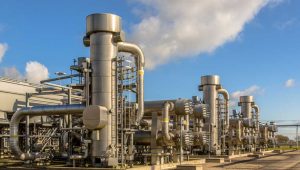In the early stages of the recovery, activity was bolstered by loose monetary policy and stimulative fiscal policy. It all helped fuel massive tailwinds that made it seem like the economy had nowhere to go but up.
To be clear, this is not to say we’re on the precipice of a recession. (In fact, there are some signs that he economy may be accelerating.)
In that vein, here are some once-hot metrics that have cooled off.
Orders surged from 2020 into 2022. With each monthly report on orders was the expectation that a lot of equipment would be shipped and put to work in the near future. In other words, today’s orders were a preview of tomorrow’s economic activity.
The good news is this metric continues to trend at record levels. It’s just not really growing.
One of the clearest signs of booming economic demand was the number of job openings posted by U.S. companies. At the peak in March 2022, there were a whopping 12.2 million openings, which translated to 2 job openings per unemployed person.
Similar to core capex orders, the job openings number represents economic activity that has yet to be realized.
But this metric has been cooling for almost three years. As of November, there were 8.1 million job openings, or 1.1 openings per unemployed person.
The good news is there continues to be more openings than unemployed people, and this ratio continues to be elevated above the prepandemic trend. However, employers aren’t scrambling to fill jobs as they did for most of the past three years.
While the level of job openings remains elevated and the pace of job creation remains positive, key metrics of labor turnover have slumped.
But the hiring rate — the number of hires as a percentage of the employed workforce — has been trending lower. This could be a sign of trouble as companies looking to control costs will cut back on hiring before having to resort to more drastic measures like layoffs.

